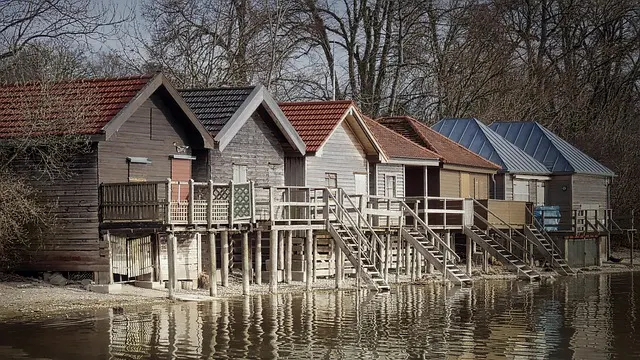Why I Looked Beyond Rent Houses
I used to think I’d build wealth through a few rental houses. That was the plan. But I never gave mobile home parks a second thought—even though they're common in Louisiana, where I live. That changed.
Mobile home investing, it turns out, has flown under the radar. It's misunderstood. It’s also one of the most consistent, high-performing asset classes in real estate. And when you start to grasp how it generates strong returns with relatively low risk, you’ll start to look at it differently too.
I’m Dr. Jeff Anzalone, a periodontist on a mission to help high-income professionals escape the rat race. Let’s dig into why mobile home parks might be the best-kept secret in cash-flow real estate.
When everyone is going left, look right.
What Is a Mobile Home Park?
A mobile home park is a residential community where individual plots—called pads—are rented to mobile home owners. These residents usually own their homes, but rent the land beneath them. That rent (called “lot rent”) covers access to common amenities—roads, utilities, playgrounds, pools, sometimes laundry facilities.
Smaller parks might have just 10 to 25 pads. Larger ones can have several hundred. Either way, the setup is simple: the tenant owns the home; the investor owns the land and collects rent. Low maintenance. High potential.
Big Money Is Catching On
Private equity is all over this now. Blackstone, managing over $800 billion in assets, is buying up mobile home parks aggressively. And they’re not alone. Sam Zell, the billionaire known for going against the grain, started buying mobile home parks back in the ’90s—when no one else was. He sold off most of his office space before the 2008 crash, but he never sold a single park.
Then there’s Warren Buffett. His company, Berkshire Hathaway, bought Clayton Homes for $2 billion. Clayton now builds over 25% of the mobile homes manufactured in the U.S. Berkshire’s 21st Mortgage provides financing for new and used homes, fueling demand.
These aren’t just investments. These are long-term plays backed by the smartest capital in the world.
Why You Should Care
If you're a busy, high-income professional, here’s why mobile home parks deserve your attention:
Strong Demand
There aren’t enough parks to meet demand. More people want low-cost housing. Baby boomers are retiring—10,000 a day—and many of them live on Social Security alone, with limited savings. They still want to own a home, and mobile homes offer a path to do that.
Shrinking Supply
Developers aren’t building new mobile home parks. In fact, many are closing. Older parks are often run down and shut down, which means supply is decreasing while demand rises. That’s a textbook setup for value growth.
High Cash Flow
Mobile home parks generate more consistent cash flow than nearly any other real estate asset. Homes cost less. ROI is higher. And the income is steady—even in downturns.
Lower Risk
The more tenants you have, the more your risk is spread out. Lose one tenant in a five-home park? You’ve lost 20% of your income. In a 50-home park? Just 2%. Mobile home parks aren’t tied to the stock market. They’re driven by local demand for affordable housing.
Minimal Maintenance
Tenants own their homes, so they handle their own repairs. You’re only responsible for the land and common areas. It’s the opposite of an apartment complex, where every repair is your problem.
Long-Term Tenants
People don’t move their mobile homes. It can cost $4,000–$5,000 just to relocate one. So if you raise lot rent by 6%, that’s a $21 monthly increase—hardly worth moving for. As a result, mobile home parks enjoy exceptionally low turnover.
Be fearful when others are greedy, and greedy when others are fearful.
The Mom-and-Pop Opportunity
There are roughly 40,000 mobile home parks in the U.S. Most—around 85–90%—are owned by mom-and-pop landlords. That matters.
Why? Because many of these parks are poorly managed. Owners don’t market. They don’t optimize expenses. They’re sitting on equity and waiting to retire.
That’s your opportunity.
Professional operators can walk into these situations, fix inefficiencies, raise net operating income (NOI), and dramatically increase the value of the property—often within months. I recently partnered with someone who bought a mismanaged park in South Louisiana. Within a month, we increased the monthly rent roll beyond what the prior owner had ever achieved in five years. All from correcting basic mistakes.
Active vs. Passive Investing
So how do you get involved?
Option 1: Active Ownership
Buy a park yourself. Start by choosing between two models:
- POH (Park-Owned Homes): You own the homes and the land. More control, more maintenance.
- TOH (Tenant-Owned Homes): Tenants own the homes. You just lease the land. Lower hassle, lower costs.
In our latest deal, we had a 50/50 mix. We started selling the park-owned homes off, evicted a few bad tenants, and focused solely on bringing in TOH tenants. Now we collect rent without dealing with repairs.
Want to go this route? Do your homework:
- Know fair market rent in the area.
- Call other parks to compare pricing.
- Learn local rental ordinances and title transfer laws.
- Search for parks through LoopNet, Craigslist, Facebook Marketplace, local MLS, and realtors.
- Build connections with local bankers and agents—they often know owners nearing retirement.
Option 2: Passive Investing
Busy professionals often don’t have time to manage a park. That’s where syndications come in. You invest with experienced operators who handle everything—management, value-add, tenant turnover, financing.
Final Thoughts
Mobile home parks are one of the best-kept secrets in real estate. Low supply, high demand, strong cash flow, and minimal headaches. That’s not hype—it’s backed by billionaires and data.
Whether you want to be hands-on or hands-off, there’s a place for you in this asset class.
Join us in the Passive Investor Circle if you're serious about building long-term wealth. Hope to see you there.
Other articles for you

No one wants to be broke

Your twenties matter more than you think

The idea is simple

If you’ve got crypto sitting idle in your wallet, you’re probably leaving money on the table.

Today, we’re diving into the two most common passive income options in the crypto space: yield farming and staking.

A Certificate of Deposit—or CD—is a savings tool where you lock in your money for a fixed period in exchange for a higher interest rate than a standard savings account.

Only about 18% of americans use high-yield savings accounts—an option that can significantly increase your returns with minimal effort.

You want to grow your wealth without spending hours learning to trade stocks, stress over market movements, or hire expensive financial advisors.

You can achieve financial freedom with just 10 paid-off rental properties, not a massive portfolio.

Real estate investing is one of the most powerful vehicles for building long-term, generational wealth.